By Huang Gongxiu, Zhang Xichun
Translated by Heiner Fruehauf
National University of Natural Medicine, College of Classical Chinese Medicine
The following translations are extracted from chapters about the formula families, from the self-published volume A Clinical Handbook of Chinese Herbal Formulas (2nd Edition) by Heiner Fruehauf. The 1st Edition is no longer in print.
Cinnamon twig primarily enters the muscle layer at the surface of the body. At the same time, it enters the heart and liver channels. It is the branch of the cassia tree which also yields cinnamon bark. Cinnamon twig is light, its nourishing essence is pungent, and its color is red (therefore its affinity to the heart).
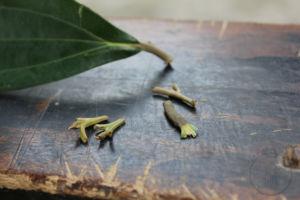
Vietnamese cinnamon leaf with Guizhijian (Cinnamon Twig Tips; L) and Guiding (Cinnamon Leaf Stem; R)
The action of cinnamon twig is rising without descending. Therefore, it can also enter the lung and facilitate uninhibited movement of qi, and enter the bladder channel and stimulate water metabolism. In a horizontal direction, it enters the upper extremities, harmonizes ying and wei, and thus treats pain in the arms and sides of the chest.
Cinnamon twig controls restless sweating, dispels wind, and disperses external pathogens. It is the primary herb to relieve the muscles. Therefore, the books all say that cinnamon twig can induce sweat if there is none; and that it can astringe sweat if there is too much of it. Actually, the type of sweat that can be induced or controlled by cinnamon is caused by wei excess and ying deficiency, refering to a situation where the yin is being advanced upon by yang. Therefore, cinnamon can be used to regulate the ying. If the ying is regulated, then the wei will become harmonious by itself. Since now there will be no place to go to for the wind pathogen, it will be relieved via the sweat. This action is quite different from that of ephedra, which can directly open the pores and thus induce sweat.
The type of sweat that can be astringed by cinnamon is caused by wind injury to the wei layer, which in turn cannot attend to (holding) the ying (in place); the ying qi is weak, and the fluids and humors thus not secured properly; therefore, the patient experiences symptoms of sweating, fever, and aversion to wind. This condition is best treated with Cinnamon Combination (Guizhi Tang), since this remedy contains peony to enter the ying and astringe the yin inside, and cinnamon to enter the wei and eliminate the pathogens outside. In this way, the sweat will stop naturally. This does not mean that cinnamon closes the sweat pores directly. In other words, if you just say that cinnamon induces sweat and controls sweat without understanding why and under what conditions, you will miss the meaning of cinnamon by far.
From Huang Gongxiu, Bencao qiuzhen (Exploring the True Meaning of the Materia Medica), Qing Dynasty, 1769
© 2012 Heiner Fruehauf
The nourishing essence of cinnamon is pungent and slightly sweet, and its functional nature is warming. It opens up the energy pathways, raises the ancestral qi upwards, descends counterflow of qi (such as flushing up, or liver qi flushing up), and disperses pernicious qi (as in wind cold situations).
Zhang Zhongjing’s Atractylodes and Hoelen Combination (Ling Gui Zhu Gan Tang) employs cinnamon to treat shortness of breath, utilizing the herb’s ascending properties. His Cinnamon Plus Cinnamon Combination (Guizhi Jia Gui Tang) employs cinnamon to treat running piglet syndrome, utilizing the herb’s descending properties. And his Ma-huang Combination (Mahuang Tang), Cinnamon Combination (Guizhi Tang), and Minor Blue Dragon Combination (Xiao Qinglong Tang) all use cinnamon to treat external cold affliction, utilizing the herb’s dispersing properties.
Defining the properties of cinnamon twig, Shen Nong’s Herbal Classic states at the very beginning that cinnamon treats coughing and upward counterflow of qi, a fact that seems to underscore once more that it is really the descending quality of cinnamon that is its specialty. However, rarely do we find that one of the other materia medicas emphasizes this descending quality. This came to foster a use of cinnamon which neglected its most outstanding feature.
Another example illustrating this point is the fact that in the context of Minor Blue Dragon Combination, ephedra and cinnamon are used side by side. For patients suffering from asthmatic breathing, the original source suggests to remove ephedra and add apricot seed, but not to remove cinnamon. The formula’s author had apparently considered the Herbal Classic line that cinnamon treats “spitting breath,” an ancient term for asthma, and thought that by removing cinnamon, the formula would not be able to treat this problem anymore. Since many physicians nowadays fail to read the Herbal Classic, they only know that ephedra can drain the lung and calm asthma, but are unaware of the fact that cinnamon can descend qi and calm asthma.
The cassia flowers blossom in mid-autumn, demonstrating that the plant’s functional nature becomes activated as soon as it receives metal qi. At the same time, the nourishing essence of cinnamon is pungent, another indication that links it to metal. Cinnamon, therefore, is able to keep the upflaring tendency of liver wood in check. Also, the branches of the cassia tree grow in the form of a deer antler (tree forms are generally differentiated into deer antler form and crab claw form), going straight up without bending. Therefore, cinnamon twigs can regulate the straightforward quality of the liver, and moderate its tendency to become bogged down and depressed.
Since its essence is sweet, it is also a good herb to harmonize the spleen and the stomach, causing collapsed spleen qi to rise and rebellious stomach qi to descend. Once the spleen and the stomach are properly regulated and in harmony, accumulations of phlegm or stagnating food will naturally disappear. Its circulating powers can also entice the force of the triple warmer to enter the bladder and thus disinhibit urination (do not use cinnamon, however, if there is inhibited urination that is due to heat; you may, as some doctors do, use a little bit of cinnamon in combination with cooling herbs, in order to entice the herbal effects into the bladder). The only situation where cinnamon should be thoroughly avoided is heat in the upper burner, or patients who regularly suffer from bleeding disorders.
I should emphasize that cinnamon twig is not a sweat inducing herb, just as it is not a sweat astringing herb. Its circulating and surface dispersing force spirals in between the surface and the interior: it can thus harmonize ying and wei, warm the flesh and the muscles, and invigorate movement within the blood vessels. It is due to these actions, then, that wind cold resolves and surface paralysis opens up.
The essence of cinnamon is both pungent and sweet: the pungent flavor disperses, the sweet flavor tonifies. The function of cinnamon, therefore, is somewhere in between dispersing and tonifying. Let’s say that somebody wants to take Cinnamon Combination for the purpose of inducing sweat, the source book suggests that s/he must take some hot porridge along with it. This addendum illustrates that Cinnamon Combination by itself does not have a strong sweat inducing effect. On the other hand, if somebody suffers from a situation of yin deficiency and yang excess, the administration of Cinnamon Combination will bring on an intense outbreak of sweat, proving that it is not really an anti-sweat remedy, either.
Once I saw a woman of twenty-some years of age who had been fighting with her husband, and in a fit of rage had swallowed a chunk of opium. At the time she had already been rescued, but now she was suddenly exhibiting signs of upward qi counterflow that manifested in the form of asthmatic breathing. She was panting heavily, and sometimes her breath would stop altogether. About every ten breaths or so, her hands and feet would shake uncontrollably, and when it seemed that she had reached a point of sufficient accumulation, she would start panting as before, and the cycle would repeat itself. Recently, her state seemed to become more critical, but many of the doctors who had been consulted did not know what to make of this peculiar disease.
When I examined her, her left guan [liver] pulse appeared wiry and hard, while her right cun [lung] pulse appeared forceless. I contemplated this information for quite some time, and suddenly I had an inspiration: this must be a sign that her anger has stirred the liver/gallbladder fire, resulting in a situation where upflaring qi from the lower warmer causes counterflow of stomach qi. In its normal state, stomach qi descends, but now assailed by the liver/gallbladder qi, it was forced to push upwards, causing on its part a reversal of the [downward] movement of lung qi. This was the cause of her asthmatic panting. The counterflow of qi caused the chest and the diaphragm to become obstructed, thus expelling the ancestral qi from its proper residence in the chest and bringing about its downward collapse. Since the lung is suspended in the chest and uses the ancestral qi as the generating power behind its opening and closing action, the sudden absence of this qi in the chest will cause a sudden inability to breathe. This was the reason for the rhythmic interruption of her breathing. Once the ancestral qi had accumulated enough force again, it pushed its way through, reached up to the chest, and again stimulated the lung to carry out its breathing action–although still hampered by the detrimental affect of qi counterflow.
I thought that the only way to treat this disorder was to find an herb which ascends collapsed qi and descends the counterflow of qi at the same time. So I decided to prescribe 4 qian (12g) of the single herb cinnamon twig. The medicine was decocted and given to the patient, who instantly resumed her normal mode of breathing.
Xu Lingtai once stated that the application of cinnamon in cases with wind heat syndrome may cause vomiting of blood. This is true indeed. I remember the case of a 60 year old woman who contracted a wind cold in spring. I prescribed a diaphoretic formula that contained several qian (6-12g) of cinnamon twig, and soon after taking the medicine she was cured. Her family members deemed this to be a good prescription and pasted it to the wall of their house. When she contracted another cold during the first month of summer, they decided to fill the prescription again and give it to her. Soon after taking the remedy she ejected blood, a situation that quickly came under control when treated. This happened because the first time she had suffered from a wind cold syndrome, while the second time she had contracted a wind heat condition. Cinnamon is indicated for the former, but contraindicated for the latter. One should definitely obstain from using cinnamon twig in warm diseases!
On the other hand, even though Master Xu was apparently well aware of the fact that cinnamon can induce vomiting of blood, we find the following case in his book, Huixi’s Case Histories (Huixi Yian): A woman suffered from phlegm related asthma in the aftermath of a cold. Ordinarily, this patient suffered from a bleeding disorder that came and went, and when it came she always suffered from slight coughing (from this we can deduct that she was probably suffering from hemoptysis). Since presently the asthma was the more serious issue at hand, he decided to first treat her acute discomfort, prescribing Minor Blue Dragon Combination, which cured the problem.
Note: Minor Blue Dragon Combination is designed to treat phlegm related asthma in wind cold situations. According to the original instructions, one should remove ephedra and add apricot seed, but in this particular case one should really remove cinnamon and keep the ephedra. Also, one should employ one of the Traditional Modifications suggested for Minor Blue Dragon Combination in the Essentials from the Golden Cabinet (Jingui yaolüe), and add gypsum as a safeguard against potential side affects. I suggest this because both ephedra and cinnamon twig are known to calm asthmatic breathing. Cinnamon, however, may cause bleeding, whereas ephedra will not. Therefore, it would be best to remove cinnamon and keep the ephedra, while at the same time adding the cooling and settling gypsum to prevent erratic blood movement. This would be a a plan that covers all contingencies. When Master Xu talked about using this formula, he did not mention whether he modified it or not. Does that mean that he modified it, but chose not to mention it? Or does that mean that he used Minor Blue Dragon Combination in its unmodified form? If he really used the original formula, one must say that although he managed to cure the disease, he sure was guilty of taking a serious risk by putting all of his eggs in one basket!
From Zhang Xichun, Chinese at Heart but Open to the West: An Integrated Approach to Medicine, 1923
© 2012 Heiner Fruehauf
More Resources
Explore our Single Herbs Series that features monographs of a variety of herbs, located in the Clinical Information pages of this website.
 Our affiliate, Classical Pearls Herbal Formulas™, has high quality cinnamon bark and twig (guizhi and rougui) available in their line of single herbs. Their cinnamon comes from 25-50 year old trees grown in the area and terroir it was traditionally grown in (Yunnan area), and processed in accordance with traditional manufacturing techniques (carefully stripped and sun-dried).
Our affiliate, Classical Pearls Herbal Formulas™, has high quality cinnamon bark and twig (guizhi and rougui) available in their line of single herbs. Their cinnamon comes from 25-50 year old trees grown in the area and terroir it was traditionally grown in (Yunnan area), and processed in accordance with traditional manufacturing techniques (carefully stripped and sun-dried).

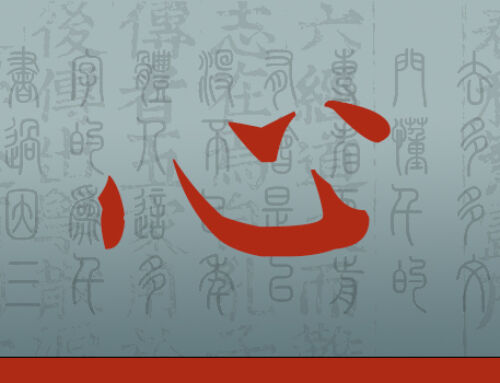

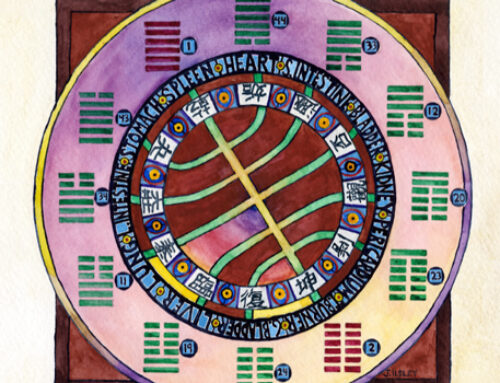



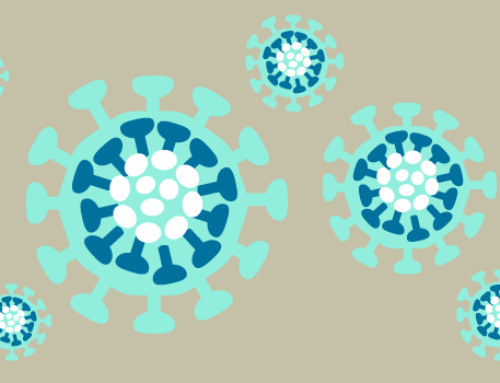
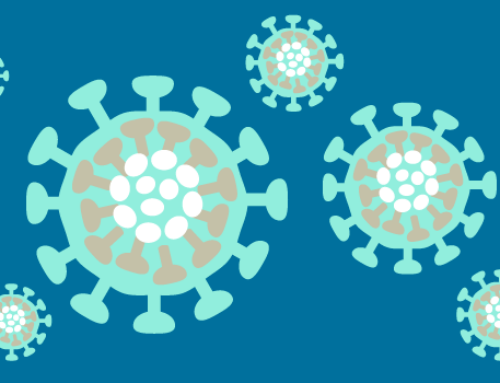
[…] “Cinnamon twig controls restless sweating, dispels wind, and disperses external pathogens. It is the primary herb to relieve the muscles,” states ClassicalChineseMedicine.org. […]